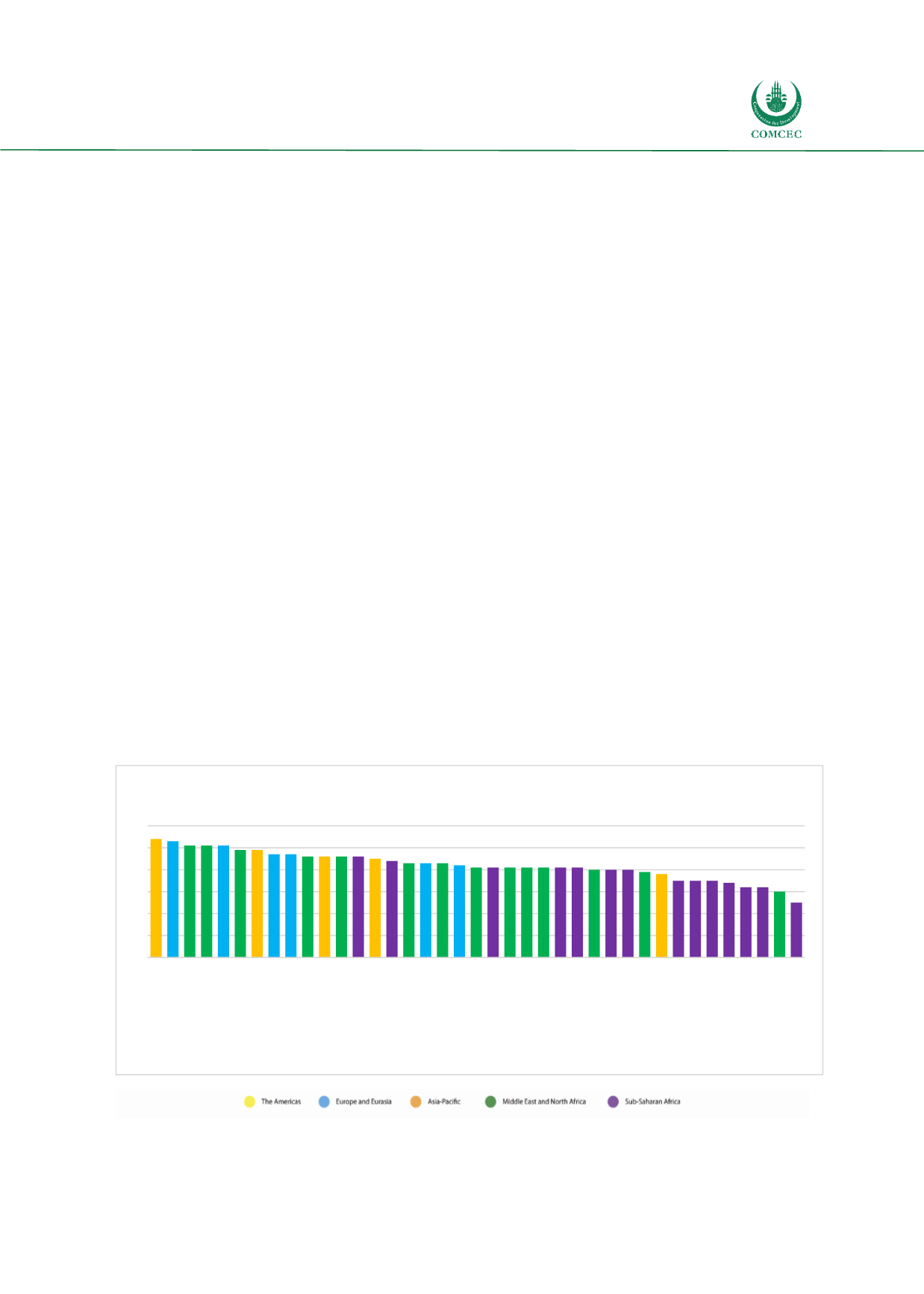

Sustainable Destination Management
Strategies in the OIC Member Countries
179
it from risking limitations caused by too many involved parties. This can be done by giving
parties observer status and asking them for input without giving them a vote in proceedings.
One option might be a Tourism Advisory Group, similar to the structure the Greater Mekong
Subregion has.
Sustainability
Common international standards in the preservation and application of sustainability are
recommended for the protection of cultural and environmental heritage. Egypt and Jordan have
similar indicators on the Environmental Sustainability Index and would benefit from jointly
developing standards and policies in this area. Due to Egypt’s higher position in the Natural
and Cultural Resources Index, it might have more experience in this area and could assist
Jordan in finding common standards.
Monitoring of Performance
It is highly recommended that a joint working group on data harmonization is established. The
performance of the corridor should be monitored in detail. A common data format is
recommended to facilitate data evaluation.
Stakeholder Management
The private sector can be engaged to promote a more formalized Holy Family sector. Policies
to engage the private sector through collaboration should be established too. This could be to
have a membership status for stakeholders or create a membership organization, similar to the
Experience Mekong Collection, created by the Mekong Tourism Coordinating Office. An annual
forum for members should be established to find out about initiatives on the corridor, industry
trends, and networking.
Capacity Building
Figure 53: An Overview of Human Resources and Labor Market Indicator for Some OIC Countries
Source: World Economic Forum, Travel and Tourism Competitiveness Report 2019
0
1
2
3
4
5
6
Malaysia
Azerbaijan
Qatar
United Arab Emirates
Albania
Bahrain
Indonesia
Kazakhstan
Tajikistan
Oman
Brunei-Darussalam
Saudi Arabia
Benin
Pakistan
Cameroon
Kuwait
Kyrgyz Republic
Egypt
Turkey
Morocco
The Gambia
Algeria
Iran
Tunisia
Uganda
Guinea
Jordan
Sierral Leone
Cote D'Ivoire
Lebanon
Bangladesh
Senegal
Mozambique
Nigeria
Burkina-Faso
Chad
Mali
Yemen
Mauritania
Human resources and labor market
















